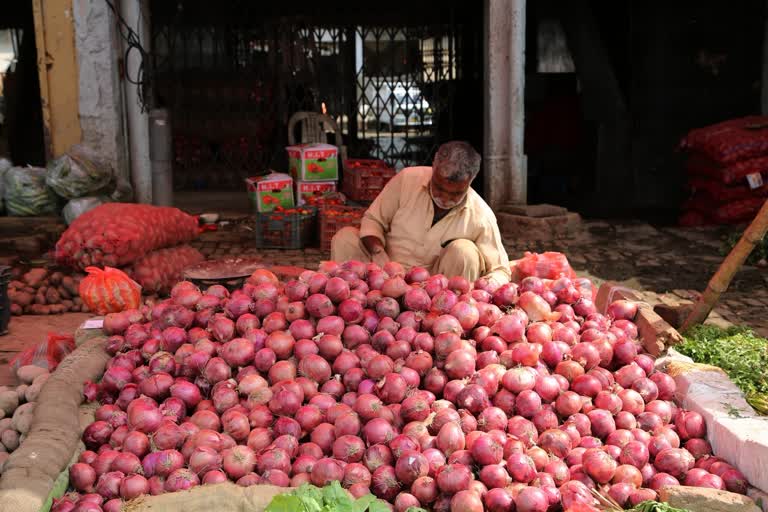New Delhi: Onion prices, which are ruling high at Rs 70-80 per kg in the national capital and other parts of the country, will calm down from November onwards when fresh kharif crop hits the market, Niti Aayog member Ramesh Chand said on Thursday.
To keep a lid on prices, the Centre is offloading onion from its buffer stock through agencies like Nafed, NCCF and Mother Dairy's Safal outlets in the national capital at a cheaper rate of Rs 23.90 per kg. Even other states are taking the stock from the buffer to sell in their states.
"We have a buffer stock of 50,000 tonnes. We have already liquidated 15,000 tonnes of onion. I think if we can release the remaining stock for another about two months and in early November we are expecting Kharif crop, prices will be back to normal," Chand told PTI on the sidelines of an event.
While addressing the event, Chand said India should have its own outlook on agriculture crops to avoid a crisis that is currently seen in onion.
"I feel the kind of changes that have happened in Indian agriculture, we have a strong need for outlook," he said.
On the government's inability to predict onion pricing, Chand further said that since there is no mechanism to capture agriculture outlook, the government is not able to come out with any sort of strategy.
"Every year, we face some serious shock. Now, onion is the focus of discussion. Suddenly, prices have increased by 2-3 times. We don't have clue about it," he said.
He said it is not possible to foresee events like impact on produce due to untimely rains and floods. But, there are certain things that can be projected in advance.
"Such a forecasting mechanism will help us to have the right strategy. If we foresee a shortage of onion, we can import onions in advance," he added.
He also said Indian agriculture has now reached a high stage of commercialisation and is well integrated with the global market.
"We need to tell farmers, states and private traders as well as policymakers -- what is likely to be our demand and supply, and prices of different commodities so that everyone can plan and we are saved of taking extreme measures," he said.
To some extent, other countries such as Australia and the US have such a mechanism. India should also devise one soon, he added.
Read more: Fiscal deficit may remain at 3.5-3.6% post-corporate tax cuts: Report



